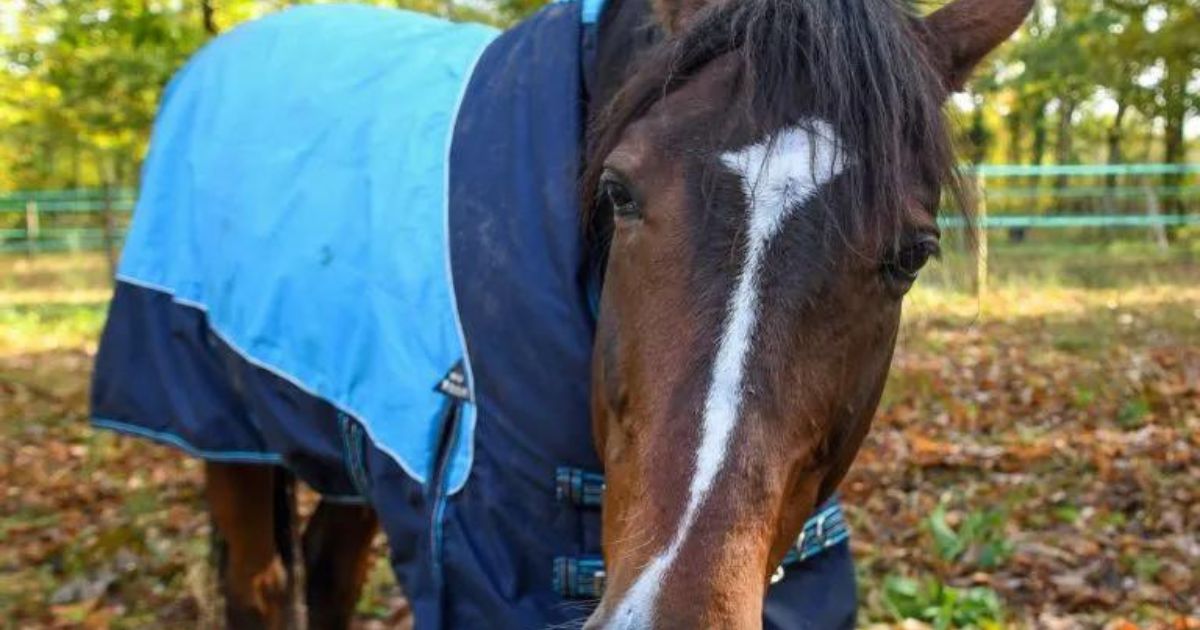Menu

As the weather turns cold and pastures become muddier, blankets are put on horses. But have you considered whether your horse's movement pattern changes once it's blanketed? Could the blanket be the culprit? It’s not uncommon for a horse’s coat to cause soreness, or even severe pain – a fact we’re often unaware of. Pain typically manifests by limiting the horse's movements, leading to potential injuries throughout the body. Unfortunately, horses don't just cope with these issues during their free time; they struggle with them under the rider's demands too. Fortunately, you can check if your horse is in pain due to the blanket and take quick action.
Read also: Has your horse made you change your mind about something important?
Veterinarian Karina Holm advises:
“There are no clear-cut rules for using blankets, but observe your horse and use common sense before deciding on the need and use of a blanket.”
Have you ever observed your horse’s movements with and without a blanket? Incorrectly fitting blankets can cause horses to take shorter steps and use their backs less. This is likely due to the blanket being too small or poorly fitted, causing discomfort and soreness over time.
By monitoring your horse’s movements as you blanket it, you can quickly assess whether it is uncomfortable and thus at risk of pain, allowing for easy prevention of problems.
Particularly vulnerable to injury under an ill-fitting blanket are the withers and shoulders. These issues can extend throughout the body. A sore wither can limit movement, affecting the horse's use of its back and neck, potentially leading to further discomfort. Similarly, painful shoulders might even cause lameness in the forelegs and subsequent pain in the musculoskeletal system.
Veterinarian Karina Holm warns:
“Don't just follow fashion trends; think before using blankets. Incorrect usage can have severe consequences for horses, including injuries and illnesses.”
The pain doesn’t just occur while the blanket is on. If severe enough, it can also restrict the horse when the blanket is removed and a rider mounts. This might be evident if the horse appears stiff or reluctant during training, or if it seems lame or tends to stumble.
To prevent soreness from blankets, we recommend:
The key is to buy a blanket that fits your horse well. It should neither be too narrow nor too wide, too long nor too short. The right fit is often what's lacking in blankets that cause soreness in our horses. The blanket should not be so large that it moves around or sits askew, nor so small that it chafes or is tight.
Consider the blanket’s denier, which refers to the density of the threads. A high denier blanket is typically more durable and less likely to stretch. If the blanket stretches, it can become too large, thus settling and pressing behind the withers.
Even if the most important thing is for the horse to wear a properly fitting blanket, you can also try to alleviate any pain with gentle daily massage. To massage the withers, simply grasp the bone with both hands and make soft circular motions.
Read also: Kissing spines: Witness the surgery and transformation of a horse into a riding horse again
Regarding the 'bib,' you can buy a so-called "bib" for horses, designed to alleviate pressure injuries. The bib can be attached to the blanket, protecting the horse's chest or withers. One side of the bib is placed under the blanket, and the other underneath it.
